Video: Our Inspiring Story: Kawerau
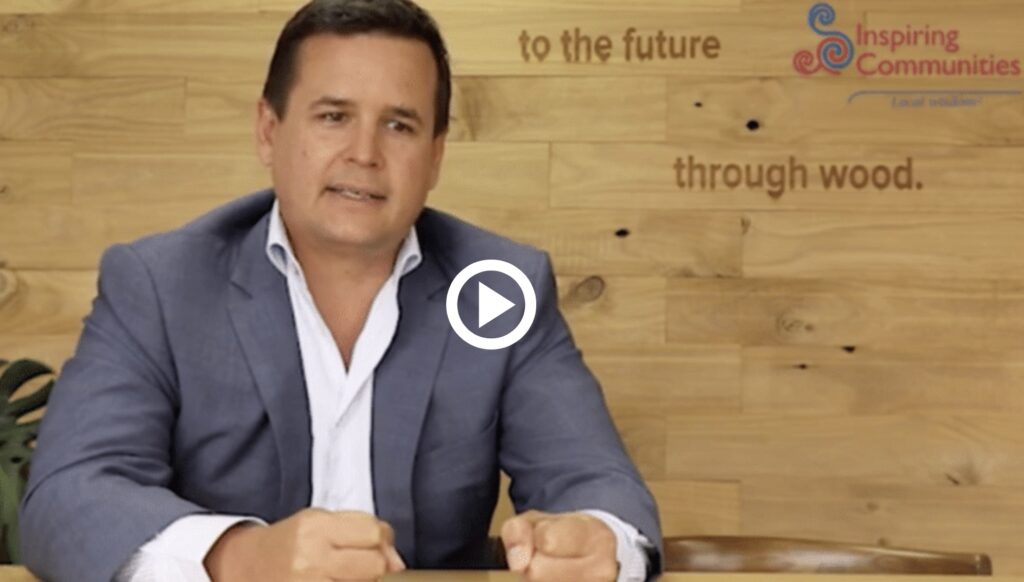
What we need is a unified purpose.
Watch this video to better understand the locally-led social and economic development pathway of Kawerau, and how local leaders, council, services providers and community groups came together to accelerate the development of their place, collectively.
Video: The power of CLD & Collective Impact
What this collection of inspiring community-led development stories from all across the motu, and deepen your understanding as to what community-led development can do to accelerate locally-led action and outcomes.
Kore Hiakai Zero Hunger Collective
Resilience takes courage. And trust.
Coming together as a community to brave a storm, such as the Covid-19 pandemic, requires a whole lot of both.
All over Aotearoa New Zealand, social service agencies, social enterprises, food industries and community-led initiatives have been increasingly responding to food insecurity. With the economic effects of Covid-19 taking hold from early on, many new community-led initiatives popped up to ensure local people are fed.
One example of this immediate locally-led action has been the Sikh Community who fed 15,000 families across Aotearoa,in an enormous group-effort over two weeks in April. Starting with the Takanini Gurudwara Sikh temple community where volunteers cooked enough meals within 24 hours to feed several hundred families. These families were given a food package to get them through the following few days. For many, this would have been the first time they would have reached out for help and queued at a foodbank in order to feed their families.
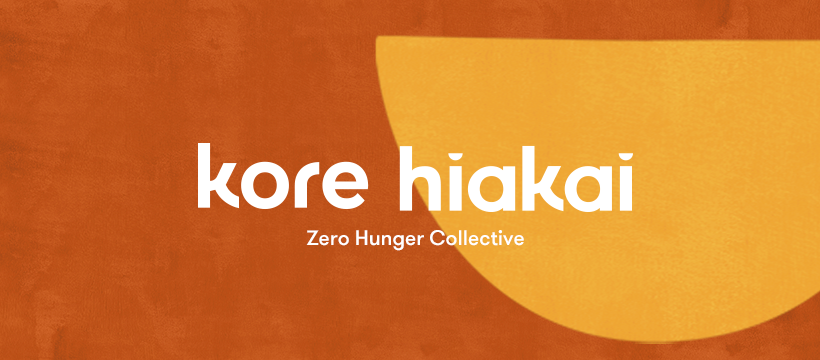
“We must address the various causes across all levels of society to combat food poverty across the country now.”
Tric Malcolm, Pou Ārahi Executive Officer for Kore Hiakai Zero Hunger Collective says the growing number of communities and organisations stepping up to meet the increasing demand for food support is fantastic. “But without a systematic approach, this growth may lead to greater dependency. We must address the various causes across all levels of society to combat food poverty across the country now.”
Building from strengths
The Kore Hiakai Zero Hunger Collective was established in 2019 with the ambition to tackle this problem through a joined-up national strategy to end food poverty in New Zealand.
Read more
While initial conversations about building a coalition started about three years ago, organisations from all parts of the food ecosystem came together for three open-space hui in 2019. Gathering perspectives on how to develop a strategic and systematic approach of working together, these hui identified three core pou, or pillars, as essential to combating food poverty:
- 1. Structural change
- 2. Mana enhancing contributions and actions, and
- 3. Sustainable systems for long-term solutions.
A shared vision for systems change
These pou are now the core values of the six organisations that have joined forces under the Kore Hiakai umbrella: the City Missions of Auckland, Wellington and Christchurch, the NZ Council of Christian Social Services, Salvation Army New Zealand, and the Vision West Community Trust.
Requiring a collective solution that all levels of society can get behind and that will enable individuals, has been the driving force behind Kore Hiakai. The Collective builds on the individual partner strengths to develop a big-picture, long-term and sustainable solution. Weaving together the wisdom and skills of the partners to form a strong, united approach, the Collective can act as enablers for community organisations, and as connectors: for example, establishing more direct collaboration with the Ministry of Social Development, building a two-way exchange on needs, issues and ways forward, has been important progress. “Traditionally, relationships have focused around contracts and funding decisions, without a direct exchange of information and discussion about the broader policy issues arising,” Tric says.
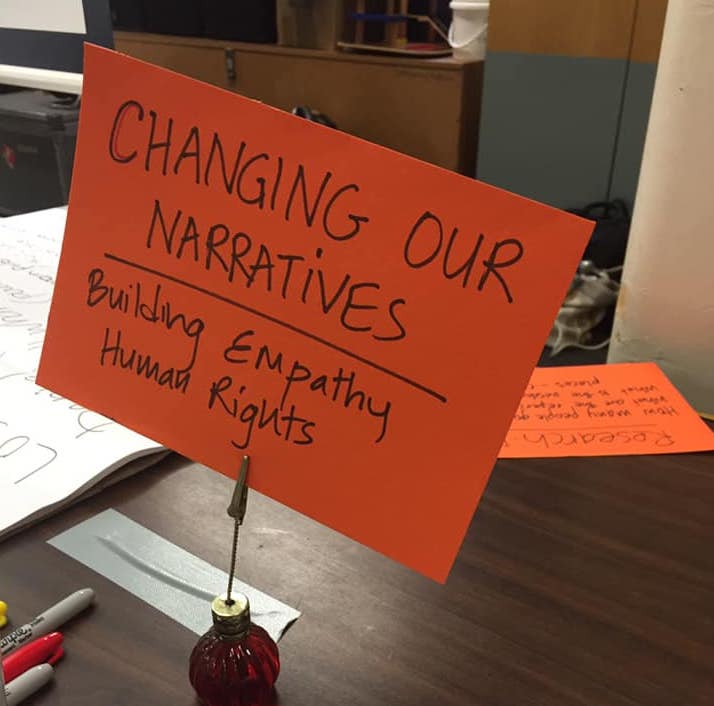
We’re now able to put options to the government as to what long-term strategies may be.”
“If decisions are informed by people who are actually working on the frontline of the crisis, they are much more likely to result in lasting changes,” adds Tric. “We want to move beyond the food parcel model. Combating poverty is ultimately about community and connection. And this is what we are working on, together.”
Having strong relationships and working from a place of trust meant the organisations could immediately jump into action when Covid-19 hit. Both Tric and Kelvin Moffat, General Manager Service and Contracts Management at the Ministry, point out that having worked together for three months before the country moved into Lockdown enabled a much more effective and collective response, says Tric:
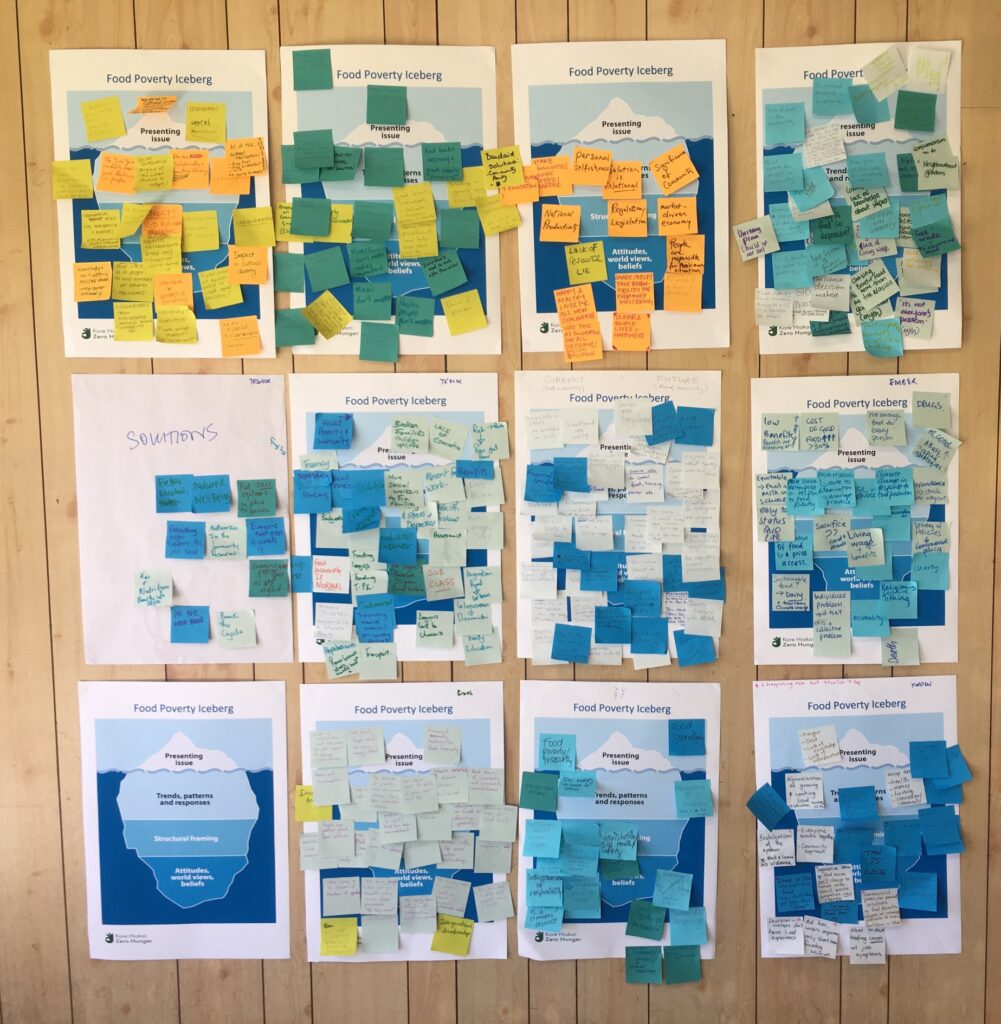
“What would usually take 12 months now took us three weeks.”
And this way of working together is here to stay: There will be “no back to normal” as in how things were before, agree Tric and Kelvin.
To find out more about Kore Hiakai, please visit their website or contact them via email: korehiakai@nzccss.org.nz
Project C-19: Collaboration across boundaries
The Nelson Whakatū community is no stranger to a Civil Defence Emergency.
Hit by severe weather and floods in 2018, devastating bushfires in 2019, and now, Covid-19.
Within days, a new collaboration between community-led initiatives and organisations dedicated to helping the most vulnerable was formed. Project C-19 is a collaboration between Volunteer Nelson and Neighbourhood Support Nelson, both very active and visible community organisations in the region and funded by Nelson City Council .
Grow from shared local visions
The goal was clear; to support the organisations working with the most vulnerable in the community. To predict which needs might arise and be most crucial, the Project C-19 team developed a work exchange survey to help identify those gaps and needs, as well as to share their strengths, resources, and capacities. This evidence saw the organisations quickly self-organise and reassign their shared capability to respond directly to what they had identified: an increased need for food and housing support, as well as for strong and direct communication – not only between the organisations themselves, but also to the community so that the right source of support can be found for everyone’s individual needs and questions.
C-19 Project Manager Dawn Gauthier says she was amazed how immediately Nelson’s active support networks kicked into action:

“The organisations were so well equipped that within days, helping hands were reaching out to those who were stretched. The proactive and empathic approach of community organisations like Age Concern was impressive.”
READ MORE
Rather than waiting for people to reach out themselves, volunteers and staff at Age Concern Nelson picked up the phone to personally check in on older people in their network. However, what quickly became evident was that a stronger communication link was needed between those working ‘on the ground’ and those facilitating the government’s support measurements during the pandemic.

Project C-19 Communication channels.
Work with diverse people and sectors
To get a clearer picture of what decisions were being made, while providing a link back into this community’s needs and capacities, Project C-19 established a strong link directly into the Civil Defence Emergency Management team.
By participating directly in the daily CDEM Welfare team meetings, Dawn has been able to gather the necessary information first-hand and moreover provide insights into the day-to-day challenges local social service organisations were facing. It also enabled quick, accurate updates back into the community. The result being locally led responsive change across their organisations closing in on those gaps.
Learn by doing
The information is moreover proactively shared in Project C-19’s weekly newsletters, offering a valuable resource to the community and making CDEM’s mahi more visible and accessible.
In addition, Dawn and her team have organised a weekly, “short and sharp” Zoom-meeting with representatives of the CDEM team and Nelson’s community organisations, where questions and updates can be shared directly. Part of these weekly forums is a brief survey checking in on how everyone is feeling about their organisation’s workload, about what has been going well, and where people have noticed gaps.
Build from Strengths
Housing and food supply proved to be one of the biggest challenges during the Lockdown period. The amount of food vouchers distributed by the Nelson Tasman Pasifika Community Trust in the first few weeks alone was “massive”, says Dawn. With the economic impacts of Covid-19 expected to more fully hit our communities over the next few months, Dawn expects this trend to continue.
“Many people may have difficulty understanding that they need help. Some may need help for the first time, having never considered accessing a food bank or social services like mental health support until now.”
Dawn stresses that it is crucial to remove the stigma around topics such as unemployment, homelessness, and mental health problems, and to make access to help and resources as easy as possible.
A focus on positivity and hope paired with strong community networks and a whole lot of appreciation are just some of the strengths and driving force behind this initiative. The collective community responses like Project C-19 are spearheading stronger links between governing bodies, social services, community initiatives, and iwi-led responses such as Manaaki Twenty who are also working closely with the CDEM team, and the people in the community who need support. Dawn says there is hope and determination that these new ways of working will take a lasting hold.
“There is definitely a desire to not just go back to the way things were before, but to try and make things work better for a lot more people as we move forward.”
You can find out more about Project C-19 here, read their weekly newsletter here, and sign up to these updates here.
Looking at Council services through a Child Equity Lens

“49% of our 0-9 year olds live in the highest level of deprivation. Just that statistic itself gave some momentum for us to change the way we were approaching things. We thought to ourselves, ‘what can we do to interrupt the poverty cycle and help our kids dream big?’”
In 2018 a visit by the Council’s senior management team to Hutt City Council introduced Jill and her colleagues to a different way of approaching business-as-usual when it came to community engagement.
“Hutt City were actively looking at how to restructure their programmes in order to meet the needs of young people, including access to public facilities for lower socio-economic communities.”
The team returned from their trip feeling invigorated and inspired to shake things up a bit.
“We have these existing, wonderful free services for our children. The library, the aquatic centre, the museum… but we knew that not all children in our community were accessing or using them equally. So we looked at all of this with an equity lens and started figuring out how we could change things, without reinventing the wheel.”
The first things to be assessed were the barriers. While the aquatic centre had partnered with a local swim school to deliver some free swim safety lessons and arranged transport for local children in years 4-6 to make use of, the reality is that lower decile schools weren’t taking up this opportunity. The reason was simple – many tamariki didn’t have togs.
What came next was a conversation with the newly appointed principal of a local decile 1 school – Sunset Primary in Fordlands, Rotorua.
“While we had some ideas, we first had a conversation with the principal to get his thinking on needs, gaps and possible solutions.”
To make the most of the swim school, Jill approached the aquatic centre and managed to get them on board to gather and wash all of the kids’ lost swimwear that had been left at the pool. Jill then delivered the togs to the school. This meant the children were finally able to go to the pool and make use of the free swim school service.
“We know that kids’ exposure to positive experiences and opportunities that are here in our community are often lacking, and that’s an area that we could help make a difference.”
Through other conversations, Jill also identified that this particular school was also in need of some basic recreational facilities for their students.
“I couldn’t understand why this school only had one playground for the younger kids. Nothing else. Lack of resources was a key issue. The reality is that generating an extra $20,000 through a gala day to help fund a new playground just isn’t possible for every school.”
Once the root of this particular challenge was uncovered, Jill and the school Principal committed to making change to see who else might be willing to contribute.
“We went to our local funder – Rotorua Energy Charitable Trust. We asked if they would partner with us to fund a child equity programme for that school. They were interested and supportive but they wanted the application to come from the school. That was a good lesson; we (Council) could assist them with the application but it should be led by the school.
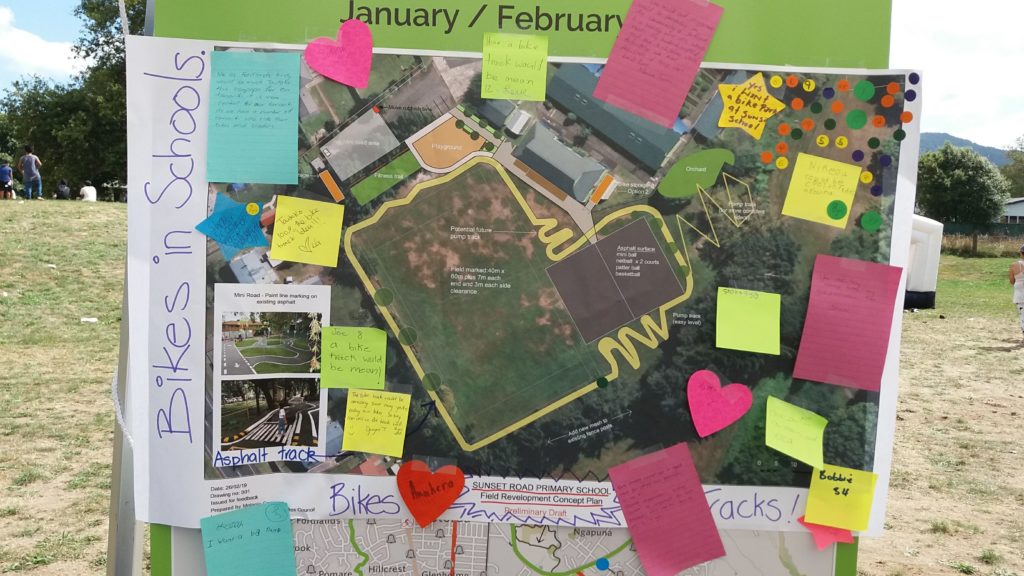
By May 2019, just four months after initiating collaboration conversations, things had quickly moved forward. The primary school was awarded funding to not only support a ‘Bikes in Schools’ programme with an accompanying bike track on the school grounds but also a substantial playground. All of which would be open to the public outside of school hours. Rotorua Energy Charitable Trust funded a salary for a part time support person who could drive tamariki to and from the aquatic center, sport and various clubs so that local children were able to participate.
At a school whānau day, students and whanau took part in the selection process for their new playground equipment and input into the development of the bike track. It was important that everyone was involved and able to have their say.
Having taken a chance on a different collaborative approach, the school’s principal was thrilled to see a new energy among the tamariki.
“I have kids showing up at 7am each morning because they’re so excited to get to school.”
Children, Jill reminds us, spend as much time at school as they do with their whānau at home.
“You want school to be a safe place for kids to learn. When you look at wellbeing, there are some basic needs that every person requires before we can learn.”
With the government’s school lunch programme already in place, and with the addition of new recreational facilities at the school, the start of the new school year for 2020 saw a record turnout on day one.
“I’m really proud of the progress that we have made to better support children in this community. We have to move fast here. This is children. It’s their education and their wellbeing. It’s urgent.”
With a council-funded evaluator engaged to write up the progress and results of these approaches, Jill and her team are now looking ahead to what’s next, including engaging with a further five decile one and two schools to see how a collaborative approach might improve child wellbeing outcomes in their communities too.
“Strong community connections only come about by showing up and doing the mahi. Showing that you mean what you say by following through on what you say you’ll do. Ultimately it’s about finding new ways to support children in the early stages of their lives. To inspire and instill hope and aspirations so that all tamariki can dream big… and so we can break the cycle.”
The Community Kindness Movement.
It’s not uncommon for us to feel overwhelmed by the amount of content that’s put in front of us on a daily basis, whether it be on the TV, social media, or other digital platforms. But for a suburb of West Auckland, social media has been the voice for what Heather Tanguay describes as “The Community Kindness movement” of Glen Eden.
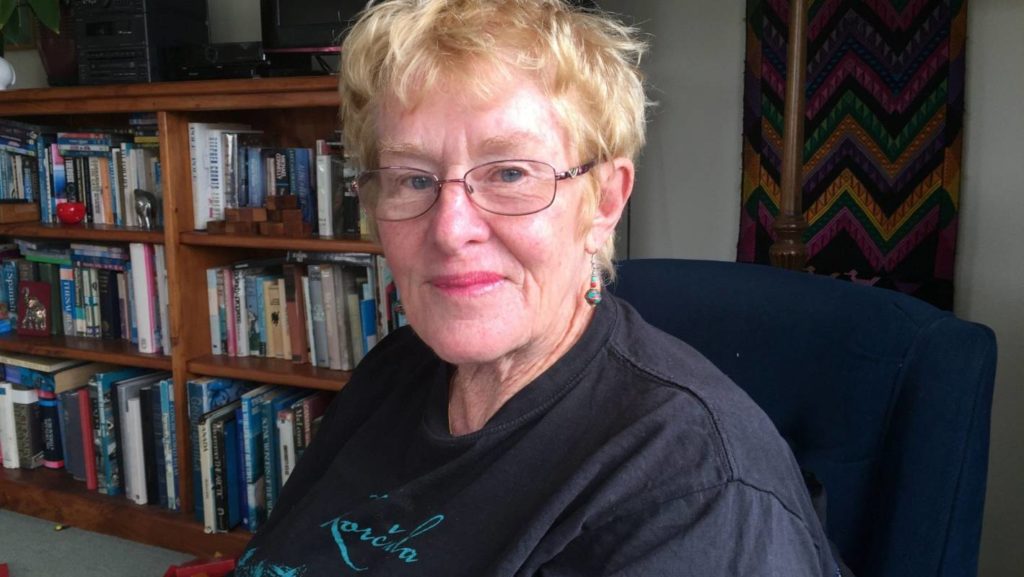
What Heather is referring to is a Facebook Group – Glen Eden Pātaka Free Pantry Group – which was set up in late 2018 as a community-led initiative championed by the Glen Eden Residents Association (GERA).
SHARED LOCAL VISION
“We knew there was a great need for Pātaka in our community. We didn’t know exactly how we were going to make it happen, and that’s why we put it to the community on Facebook.”
The response was incredible. Among offers of free building, donated materials, and locations to host the Pātaka, it was clear that the community of Glen Eden – with a population of over 7,000 people – was willing to bring this project to life.
BUILD FROM LOCAL STRENGTHS
Another GERA member was instrumental in building the initiative’s online presence. From there, she and Heather received many offers of support and from there a sub-committee with another five members was established, based on their relevant skills.
First, some research was carried out. The Pātaka Kai initiative originated in South Auckland and has since grown into a national movement. Heather credits the Pātaka Kai website with having all the information they needed to get started.
“It was wonderful to be able to look at their resources. How did they did it, what things we had to have in place, what things we needed to consider… council regulations and things… just about everything we needed to get this project up and running.”
With a small amount of funding they were able to buy the materials for five Pātaka which were set up in all corners of Glen Eden; attached to fences of people’s homes who’d offered their property as a Pātaka host.
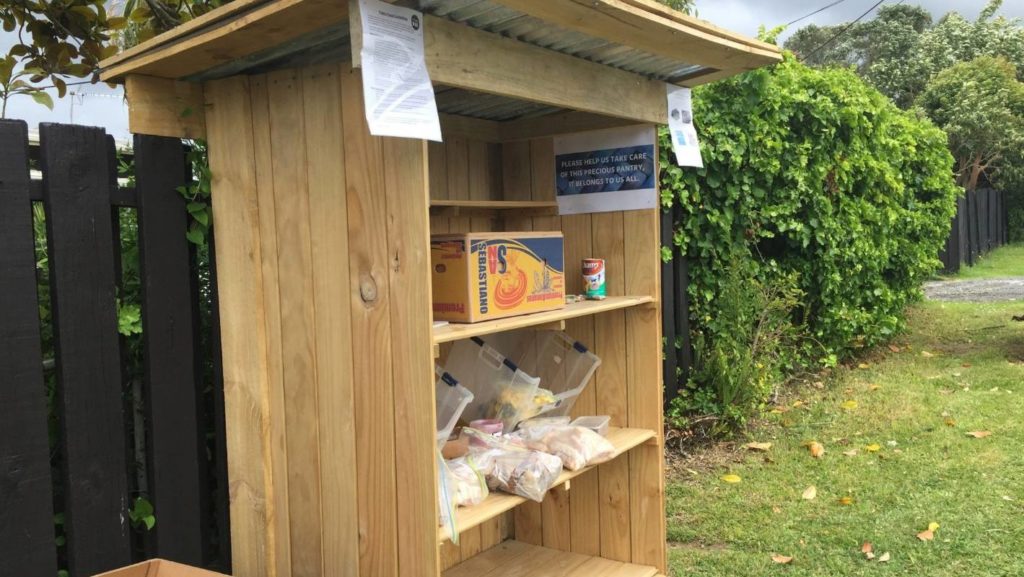
LEARN BY DOING
“Right at the beginning we didn’t have doors for the pantries, so the birds were getting in and eating the bread, making a mess… but we didn’t have the money to do anything about it. Then out of nowhere a local flight attendant made five pantry doors. She is away with work for weeks at a time, but this is still her community. Isn’t that lovely? I apologised to her and said we couldn’t afford to reimburse her, but she didn’t expect anything. It was quite overwhelming.”
Heather says she and the team also had to learn to let the community go about their giving, taking and trading from the Pātaka in their own way.
“Generally speaking everyone is mindful of others – not taking too much, not leaving it empty – and if there is bad behaviour people usually communicate about it in the Facebook group.”
The bad behaviour, Heather says, is usually people clearing the Pātaka out; taking everything.
“It happened to us at the beginning, but there’s no judgement. You just never know a person’s situation. We heard of one woman who was accused of clearing a Pataka… but we also knew from the school principal that she was a P addict trying to shake her addiction, and she had kids at home.”
With rising housing prices and stagnant wage rates, any family could be at risk – no matter their socio-economic standing.
“An example to consider is a young man who had to give up his job to look after a sick wife and child, paying huge rent. He was desperate, and his wife could not receive a benefit as she was not a New Zealander. The Pātaka helped him provide some food prior to Christmas.”
It’s not just local neighbours donating food to the Pātaka. In the relatively short time they’ve been up and running, the sub-committee have worked to get assistance from local business owners including bakeries and supermarkets who would otherwise be throwing unwanted produce into landfill.
“We have been able to demonstrate through the Pātaka, that what has been perceived as food waste can be avoided and can be positively redirected to people in need.”
Their community spirit doesn’t stop there.
“We would love to see a gardening project in Glen Eden. Veggies and fruit are out of the question for families on a tight budget.”
With willing volunteers and available garden space nearby they are hopeful that 2020 is the year they can bring this part of the project to fruition.
“It hasn’t all been plain sailing, but this is our home. A place in need. And besides, I don’t do hobbies. I do community.”
Growing and Nurturing Child-Rich Communities.
With no local supermarket, no public transport, families struggling to provide food and minimal job security, longtime resident Honey Thrupp – affectionately called the Heart of the Community – saw an opportunity with a spare plot of land to create a locally-led source of nourishment for Taneatua’s 786 residents. Through the support of the community and various organisations, her vision has been brought to life.
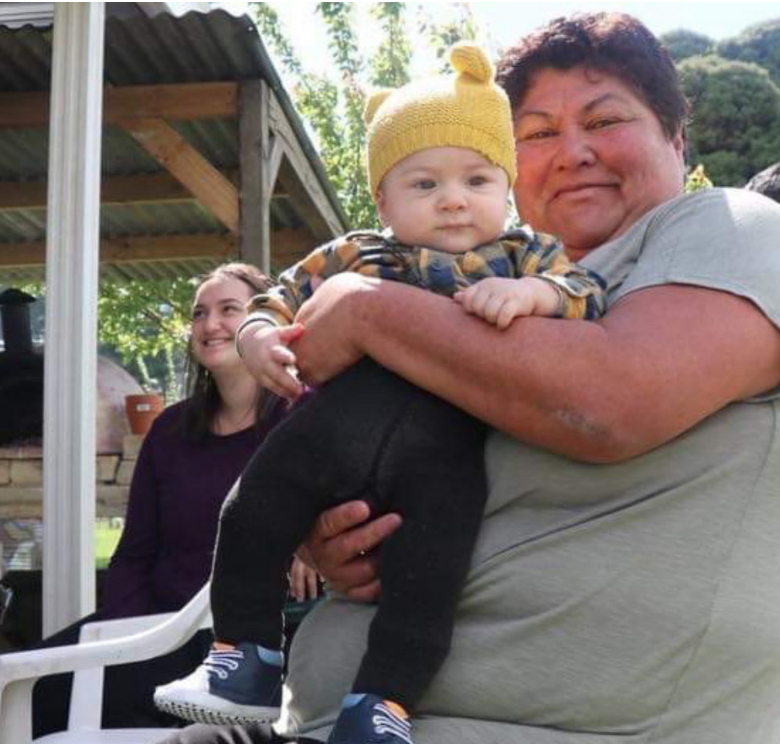
“The purpose of the garden has always been to create a place of learning, nourishment and belonging for our tamariki.”
The Hughes Place Garden Project has since become a place where whānau and friends can come together to share what they know as well as their talents. A place to care for their young people through locally managed childcare and school holiday programmes. A place to break down stigma and silence through a guiding pathway to social services. A meeting place where no one person is excluded and where showing compassion, love and empathy is expected from one another.
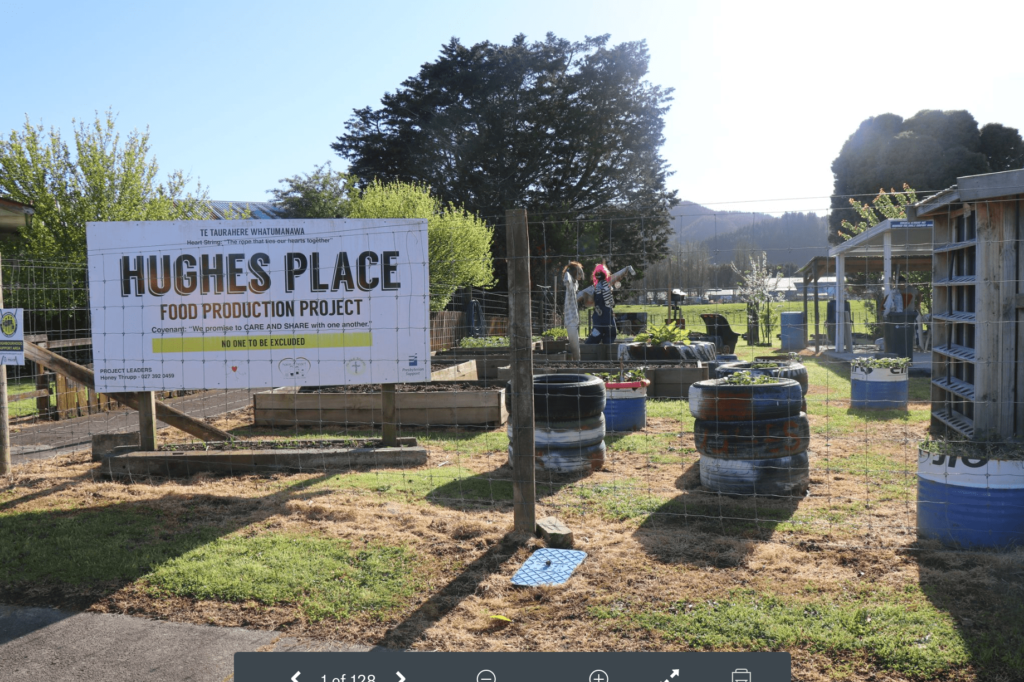
A place to grow and nurture a child-rich community.
GROW FROM SHARED LOCAL VISIONS
Joining forces with neighbours, and reaching out to other members of the community, Honey connected with many people who were all happy to help. Everything from building supplies, the plot of land itself, and seedlings to start the garden off were donated in kind from local businesses and other residents. It was clear early on that this was a project that others also understood its value.
The tamariki of Taneatua were invited to a workshop so they could share what they wanted for the garden, creating a sense of ownership and accountability for the young people in the process.
Through inclusive, shared language a covenant was drafted to set the intent and purpose of the garden, and to outline the beliefs and values that underpinned this place.
On the day the garden officially opened and was blessed, the tamariki of Hughes Place, stood alongside their elders, and collectively signed the covenant – using their paint-covered hands and fingertips to do so.
BUILD FROM STRENGTHS
Even in the quiet cul-de-sac of Hughes Place, Honey and her husband Tamiana found that they had a wonderful array of capability right on their doorstep. Between their immediate neighbours and others not far away they soon had a core team with varied skill sets; from previous committee and financial experience to administration skills, building experience, and a native seedlings and plants specialist.
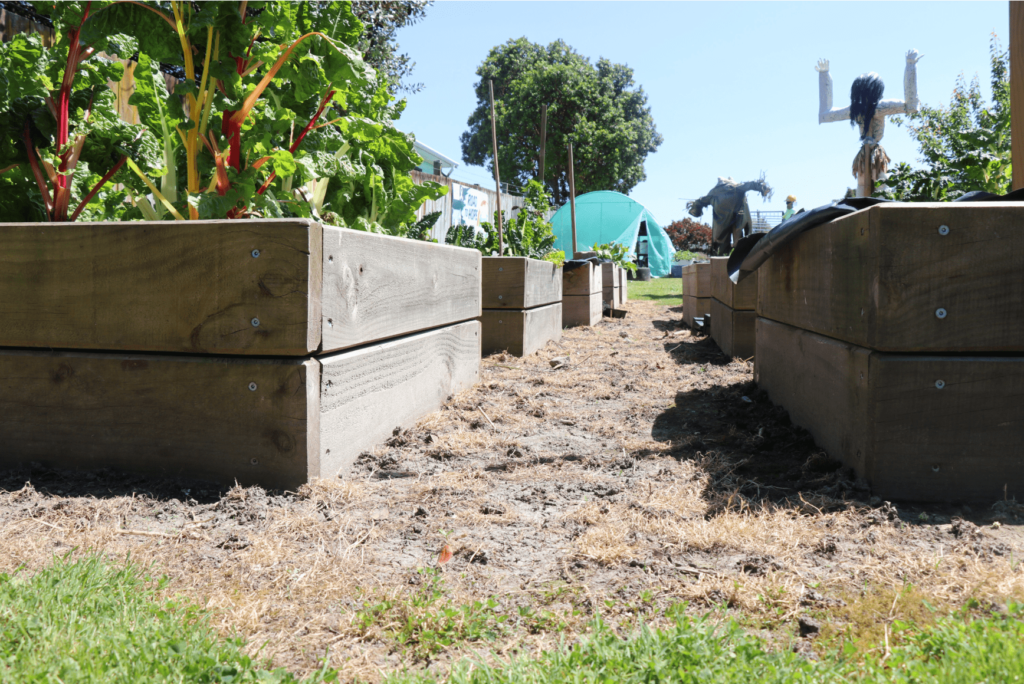
GROW COLLABORATIVE LEADERSHIP
With Honey very much at the heart of the garden and the community, a committee was wrapped around the project to support her.
Tamiana is key to that support. An Amorangi Minister, a Police Chaplain, and the Chairman of Waimana Marae, he is a man committed to sharing his knowledge and mana with his whenua.

The Thrupps’ other property – a farm at Ruatoki, which looks up through the valley of Te Urewera – quickly became an additional part of what is now called the Hughes Place Food Production Project. With the help of the project committee and other community members, it has since been able to add milk, pork and poultry to the project’s ever-growing list of enterprising assets. It is also very clearly what drives the Thrupps’ connection to Papatūānuku (earth), and which fuels their manaaki (generosity).
Some of what has been learned includes:
“Leadership and establishing roles and responsibilities across the group is key. Bringing together a community and building the foundations of success around that is critical in the beginning to get right. And the garden had that from the outset.”
– Andrew Iles, Taneatua Ward Councillor.
“Understanding your strengths, weaknesses and what talents you have around you is something you need to identify up front. Honey has always been the heart of the garden. She is what makes it tick. But as a team we all have something to contribute, to give.”
– Maurice Tooke, Hughes Place Food Production Project, Chairman.
Families and individuals have always been encouraged to both give and to receive at Hughes Place Garden. With the sign out front of the garden simply but powerfully stating, ‘No one to be excluded’.
Hughes Place Garden Project was initially funded and supported by Presbyterian Support Northern, Have a Heart Foundation, PressGo – Mission Enterprise Fund, Te Aka Puaho, Rotary and The New Zealand Lotteries Commission. Moving forward, the project is now focused on sustainability so that they don’t need to rely as much on external funders.
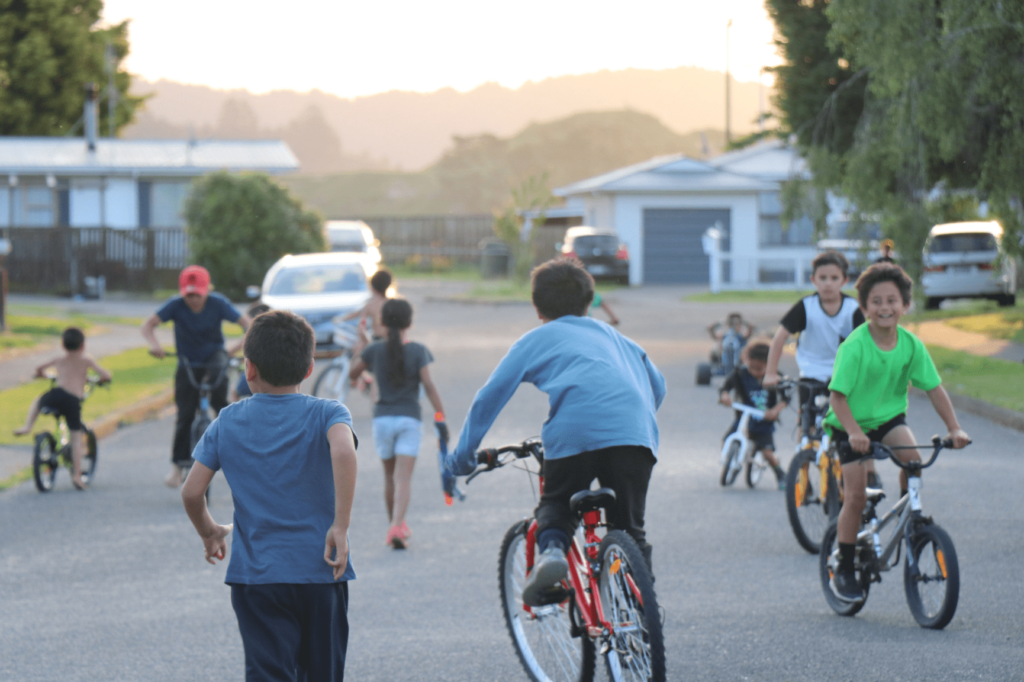
It is with a deep sense of connection and belonging from the garden, the prosperity and vitality of the farm, an unwavering commitment from Tamiana and Honey Thrupp to honour their whāinga (purpose) and kauae runga (knowledge of the heavens), and the spirit of Taneatua residents around them, that the Hughes Place Food Production Project continues to be the bountiful, community-nourishing project that it is.
Celebrating our biculturalism and multicultural communities with children at the heart
Matariki, Te Wiki o te reo Māori, Diwali, Chinese New Year, and our seven Pacific language weeks are always annual highlights for Barnardos in our mahi alongside children and young people, and especially in our work with children in their early years of life.
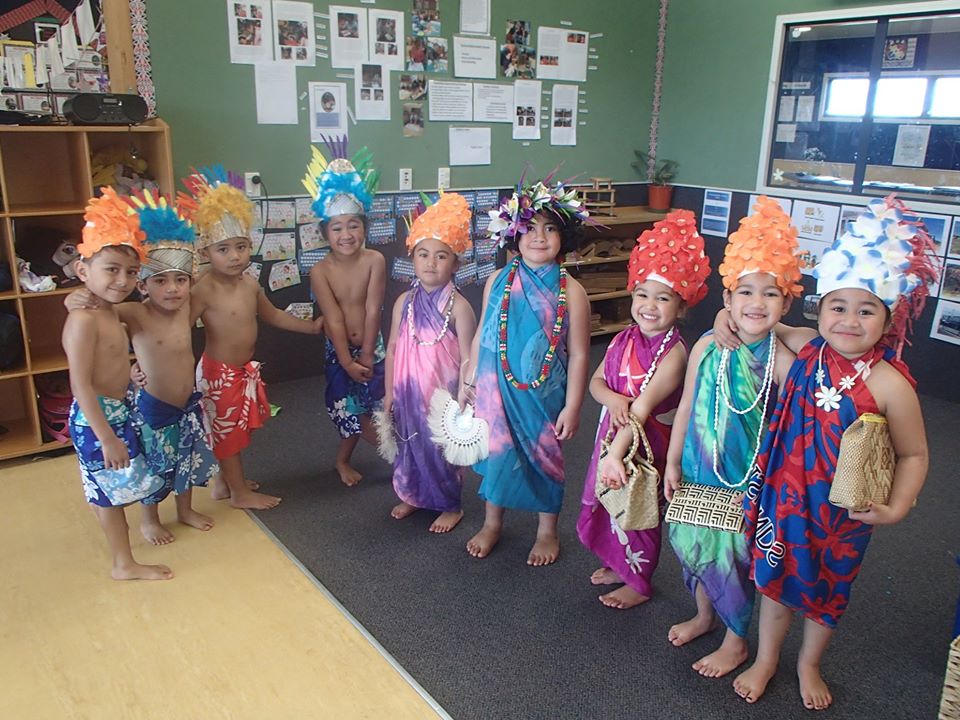
This year many children and tamariki in our Barnardos Early Learning Centres and Home Based networks celebrated in their communities with their kaiako, families and whānau.
Up and down the motu, these special days and weeks showed our community development approach in action through evening celebrations with haka, poi dancing, waiata, hāngī, arts and crafts, storytelling, language learning, and yummy kai from different nationalities.
These celebrations throughout 2019 have been a great way for our diverse communities to share and celebrate their own cultures, and for children and their families and whānau to learn and embrace cultures different to their own. They have built connectedness in many communities around Aotearoa New Zealand through culture and with children and tamariki at the heart of these connections.
Co-design of Poutokomanawa – A place for whānau in the heart of Manurewa
For the renovation of Manurewa Plunket Family Centre in 2017, Plunket took this opportunity to actively work with Auckland Council’s ‘The Southern Initiative’ (TSI), and partner with local whānau to achieve the aspirations of the community, to make progress towards more positive outcomes for tamariki and their whānau.
TSI brought to this project their vast knowledge and experience in developing innovative experiences within South Auckland, with whānau at the centre of co-designing and testing solutions. Plunket brought staff and volunteer insights, community and parent connections, and Plunket data and research. This was a chance for Plunket to use a whānau-centred approach, with whānau voice, strengths, needs and lived experiences being the primary driver.
In engaging with whānau, Plunket and TSI found whānau want a safe and welcoming space they could visit during the day while away from home, as an effective way to connect with other whānau. These drop-in centres are places for parents whose home environments may be inadequate, unhealthy or unsafe – these are the whānau needs Plunket were committed to addressing.
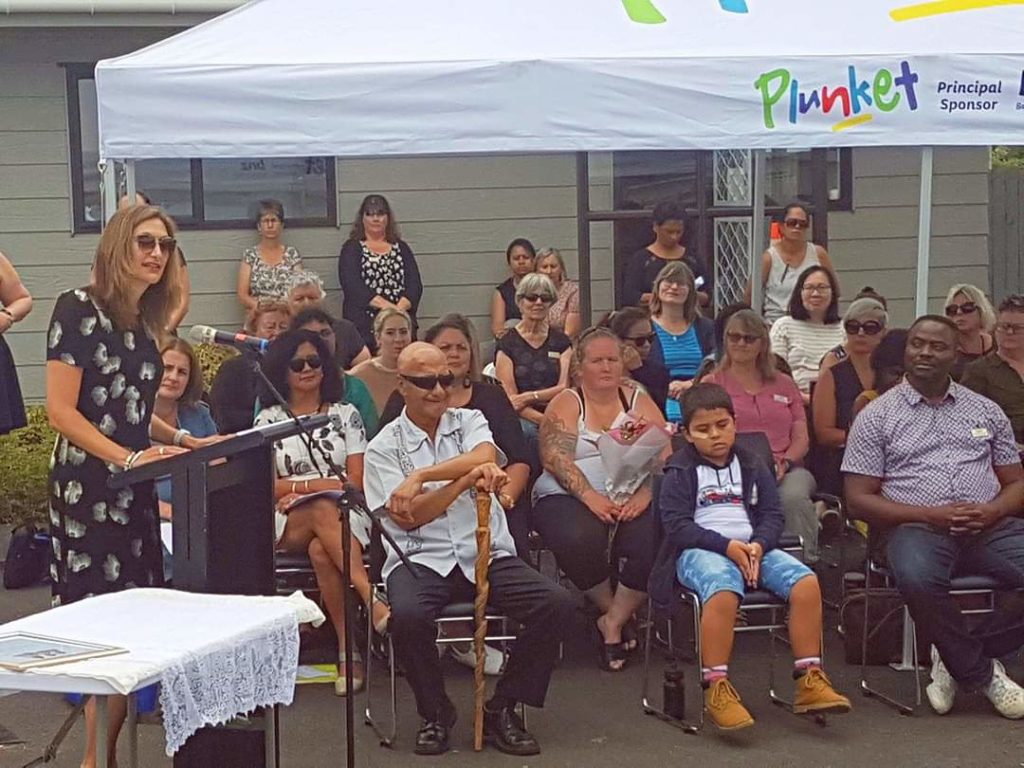
What’s different?
The co-design of Poutokomanawa incorporated a whānau centred co-design approach that is based on Māori methodology and principles. The core principles of this approach are:
- Manaakitanga – hosts whānau in a way that empowers them, and removes barriers for participation
- Whānaungatanga – builds meaningful relationships in culturally appropriate ways and engages in ways that form trust
- Tino Rangatiratanga – gives whānau autonomy over how and in what way they will participate
- Mana – Ensures a balance of power and acknowledges that whānau are experts in their own lives
- Ako – Learnings are mutually reinforced
The process had four stages:
- Frame – clarifying the challenge and key focus areas
- Explore – developing new perspectives and insight by connecting with whānau
- Imagine – generating new ideas with parents and stakeholders
- Test – testing new ideas and prototypes in a low cost, low risk way
The key to this shift was identifying the challenge or the need and thinking creatively about the range of possible responses.
We engaged with local whānau not only in Manurewa Plunket but also in local venues such as the supermarket and library, with a clear aim of linking with whānau who Plunket are not connected with. The whānau priorities identified for creating spaces that enable parents to nurture and create better outcomes for their children were about having:
- A welcoming space
- A closer connection between whānau and staff
- A safe place for tamariki where parents can have a break
- Facilities for baby changing and washing, and accessible kitchen facilities.
Outcomes
In March 2019 whānau were invited to offer feedback. They described the centre as bright, peaceful and positive, and as a place of healing and learning, with better visibility and accessibility. Further improvements were suggested by whānau and these have been built into ongoing quality improvement.
Feedback from Plunket staff identified that more whānau are attending group sessions and clinics, so consequently, more clinics are now available at the centre. This has also built staff capability: they are more open to new ideas and support creative and innovative approaches. The co-design process has gained attention from other Plunket teams who are looking to renovate their space
The outcomes that emerged from the co-designing of Poutokomanawa included:
- Whānau are empowered to co-design and decide what should be offered in the space.In utilising a whānau-centred approach the whānau needs are met.
- Whānau are more connected to support networks in the wider community of Manurewa.
- Plunket staff, and staff work alongside whānau in Manurewa have gained a better understanding of the importance of whānau lived experience and strengths
- Plunket’s Manurewa Family Centre is a warm and welcoming space that meets the needs of whānau.
Key Learnings
In this project, Plunket staff worked in new ways by prototyping on site and supporting the integration of whānau voices into the design of the renovation.What is also evident is that whānau are keen to contribute to the design and use of such spaces, and whānau are critical to making the space work to meet their needs and can help with strategic and operational challenges. Staff also require capability-building around whānau-centred design and practice.
What now?
The new focus for the Manurewa Plunket team are:
- To sustain the positive changes and develop deeper relationships with whānau in order to assist whānau to meet their immediate needs, reduce stress, and build confidence and capability.
- For staff to focus on whakawhanaungatanga on site, including regular team connections and to continue having conversations with whānau, the Manurewa team, with Plunket more widely and with external stakeholders
- To keep connecting whānau with each other and with community supports, encouraging Manurewa whānau ‘champions’ to feel ownership in the space, to welcome and support other whānau.
This initiative has provided an example for Plunket staff to co-design with whānau as partners, to achieve their aspirations.
We have learned what is required to move from spaces that services are delivered into, to spaces that hold and nurture whānau.
We are about to apply a co-design approach with whānauto the redesign of Powhiri Avenue in Whangarei and Kingston St in Auckland.
Collective Impact for Child Wellbeing
Child poverty comes from many sources, with one of the biggest being debt from loans with high interest rates.
These loan interest rates have a disproportionate impact on the wellbeing of children and families. The recent law changes to put a cap on interest rates were not an overnight certainty but instead, the result of a long campaign led by FINCAP* in partnership with its 200 local free financial capability and budgeting services in New Zealand and the communities they support.
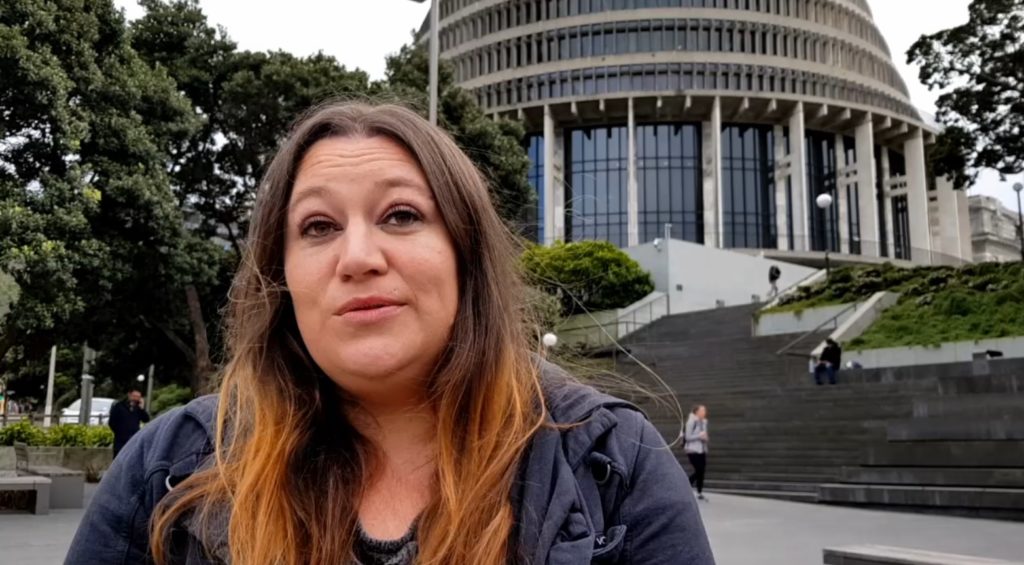
FINCAP used the Child Rich Community principles of collaboration, empowerment and relationship-focus to develop their submission on the Credit Contracts Legislation Amendment Bill and highlight the key policy issues for communities to also speak out on. They had three rounds of engagement with the 200 services in their network during 2018-19 which resulted in 110 organisations contributing submissions through that process. They also held 11 hui nationwide in early 2019 to inform local communities about the Bill, to prioritise key issues to campaign on for change, and to encourage budget service users to share their stories through the Select Committee submission process. Sarah Newham’s story is outlined below.
The Government made changes to the Credit Contracts Legislation Amendment Bill as a direct result of strong submissions at Select Committee stage and introduced a cap of 0.8% interest per day (still 24% in interest over a 30-day month). This sits alongside a new overall limit on the total cost of credit for high-cost loans, which means the interest charged can’t be more than twice the amount initially borrowed. This would mean if someone borrows $500 they won’t have to pay back any more than $1,000 over the lifetime of the loan.
Sarah’s story is below:
2018 was the first time I ever took a payday loan. I’m a solo mum, my kids have their birthdays really close together and the budget was tight. I’d tried to save for it but there’d been some unexpected costs. I didn’t want to let them down, so I borrowed $400. It was easy. I went online and had approval in a matter of minutes. I’d have to pay back nearly twice that but that was going to be OK once things picked up. I made the first couple of payments, they were big – nearly a quarter of my weekly income but then I missed one.
The penalties were bad but the rate they wanted repayment made at was worse – it was huge because the interest rate was huge. There were weeks where I was choosing between paying for electricity and paying for food. Meeting the loan repayments was the most important thing because having a bad debt against my record would have cost so much more in the long run.
In the end it got to the point where I was begging the lender to send the debt to a debt collector. The extra 20 or 30 percent added was worth it just to be able to pay it off over a longer period of time. They refused.
It only turned around when I finally got the local budgeting service involved and they made the lender send the debt to a collector. I’m almost debt free now, but it’s come at a real cost to me and my kids.
This year, on my birthday the loan shark I borrowed from sent me an email that said something like “Happy Birthday Sarah – how about you treat yourself with a loan”? I felt ill. I’ve looked at the changes this law will make, and I’ve put them up against my experience. They would have helped a bit, but they wouldn’t have made the total cost of the loan less than it was to start with. The payments I had to make wouldn’t have been any smaller. Maybe some of the penalties would have been smaller but I only just missed that third payment. If things had been a little different I could have paid it all back on time. Maybe at the cost of my kids’ breakfasts and a couple of disconnection threats. Lots of people do.
If I had, I don’t know if I would have said no when they offered me a new loan, or another after that. There’s always a bill that needs to be paid, especially when you’ve been tightening the belt to pay the last loan. What I do know is my family would be a lot worse off for it.
I also know that a lot of other people are hurt by this kind of lending too. That’s why I’m speaking out. It’s not easy to tell my story so publicly. Being “bad with money” is seen as a shameful thing in New Zealand, but it’s not as shameful as the way people like me are being preyed on by this industry. Please, make sure that this law change stops that.”
FINCAP emphasised that this experience has highlighted the power of authentic story-telling from members of the community through the law reform process. FINCAP CEO, Tim Barnett, advised that “these stories can move hearts and mountains, especially in politicians’ offices and select committee rooms.”
*FinCap (the National Building Financial Capability Charitable Trust) supports 200 services around New Zealand that provide financial mentoring support to people. These services see 70,000 people a year between them. Most people that visit these services have a number of expensive and unaffordable loans ranging from bank loans, personal loans, credit cards, car loans and high cost short term loans. The average debt is $10,000.
